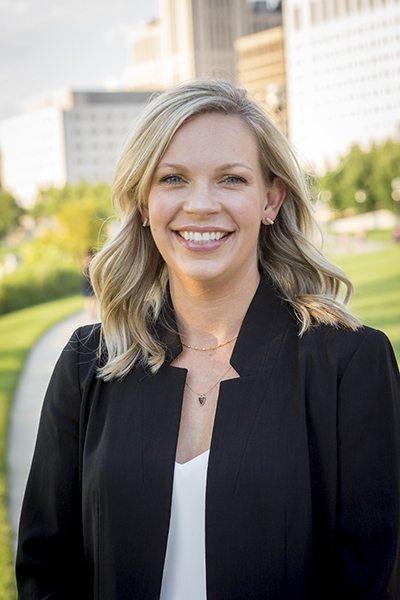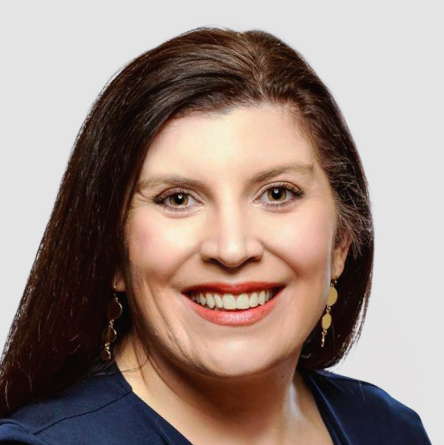|
Getting your Trinity Audio player ready... |
Christine Pabst was thriving as Cameron Mitchell Restaurants’ senior benefits manager. Just a few years after joining the fine dining company, she was assuming responsibility for workers compensation, leave administration, and other key HR issues. While Pabst has always placed an emphasis on the individual employee, something happened in 2013 that would change how she views employee benefits forever: she was diagnosed with cancer.
Suddenly, Pabst found herself at the center of a system she spent her professional life administering. A persistent cough sent her to a primary care physician who ordered a chest X-ray. That led to a CT scan, several biopsies, and a lymph node removal. Doctors told Pabst she had Hodgkin’s lymphoma. She made an appointment with an oncologist and was shocked at what she found.
Pabst, who was just thirty-three at the time, expected wise counsel and comforting words. Instead, she encountered a rigid physician who spent less than ten minutes speaking to her. When she first tried to get a new oncologist to provide a second opinion, her healthcare provider told her there was a six-week wait time.
As a benefits manager, Pabst often fielded calls from employees who needed to know how to find a physician or access care, and she would advise them to call their insurance provider or use an online portal. Yet with stage IV cancer, she didn’t have time to follow standard procedures. Instead, Pabst relied upon her network of friends and family to help her get an appointment with a well-known oncologist at the James Cancer Hospital at the Ohio State University Wexner Medical Center.
Seventeen blood vials and five hours later, she had a different diagnosis: stage IV Non-Hodgkin’s lymphoma.
Armed with a New Perspective
With a new oncologist and a new treatment plan, Pabst started six rounds of chemo taken every three weeks for six months. Today, Pabst is remarkably healthy. While she’s been cancer free for almost seven years, the trying ordeal marked a turning point in her career. “My experience as a cancer patient showed me firsthand how frustrating it can be to navigate the world of employee benefits and gave me a renewed passion for making the user experience better,” she says.

With cancer treatment firmly behind her, Pabst wanted a fresh start. She wanted a new role—one that would take her from daily administration to benefits strategy, design, and implementation. In 2015, she joined American Electric Power (AEP) to help manage the medical plan that provides care to the utility’s eighteen thousand employees and seventeen thousand retirees.
Pabst immediately faced a major challenge as AEP transitioned all insured members to high deductible health plans. Soon after her start date, she was on the road delivering in-person benefits meetings. Eighteen months later, she assumed prescription drug benefits management, and at the end of 2017 she helped transition roughly thirteen thousand of AEP’s Medicare eligible retirees and their dependents to custom group Medicare advantage plans. This transition included adding clinical oversight and guidance for individuals at a time when they need it most, something traditional Medicare does not provide.
In 2019, Pabst became AEP’s director of employee benefits. Just four years after making a career move to pursue a strategic role, Pabst had the opportunity to lead seven benefits consultants and direct AEP’s health and welfare benefits program.
In these positions, Pabst has been able to leverage her experience as a patient to create a better employee experience for her colleagues. In 2018, AEP implemented a second opinion service that gives employees the chance to have a virtual conversation with an additional physician at no cost. “I was originally misdiagnosed, and I know how important a second opinion can be in confirming a diagnosis or getting to a correct treatment plan,” Pabst says. “I wanted to remove the obstacles between our employees and that second opinion.”
AEP’s HR team can design new programs packed with special features, but benefits are only effective when employees understand, remember, and use them. That’s why Pabst is working to increase engagement. “People who receive a shocking diagnosis or experience a profound medical event don’t always remember a benefits brochure their company mailed to their house in the previous six months,” Pabst says. “We want to do all we can to streamline our product offerings, so our employees use our benefits when they need them most.”
Pabst’s affinity toward her work and role as a change agent doesn’t go unnoticed by her peers. “Christine’s deep understanding of the role of healthcare and health insurance in people’s lives is the foundation of her thoughtful, caring approach to benefits management,” says Brad Kirkpatrick, chief client officer for Anthem national accounts. “She is leading changes at AEP that are going to benefit the company and its employees.”
“I get excited when I see new therapies we can cover in our benefits plan because I picture a face. And I see the chance to help save a life.”
Plans for Real Life
In the past year, Pabst has worked with vendors to integrate into the healthcare experience. AEP employees working in a disability center advise users on available services, and she and her team created a benefits website that goes beyond a typical intranet—details are available externally so spouses and insured family members can access information at their convenience.
Because preventative care is especially important to good outcomes, AEP made plan changes to cover more procedures like colonoscopies and mammograms with no participant cost share. But Pabst wasn’t content to provide basic screenings—she took things one step further by changing claims processing procedures to give employees increased coverage regardless of their health history. “A cancer diagnosis should not come with a scarlet letter that marks you for life. Someone that has survived cancer shouldn’t have future screenings billed at a much higher rate, and at AEP, they won’t,” she explains.
These ideas and strategies fit well at AEP because the organization as a whole is committed to cancer prevention. The American Electric Power foundation partners with the American Cancer Society to fund and implement projects that increase the number of patents screened. They also seek to uncover and remove community barriers to treatment and care. AEP’s plans cover employees in rural areas, and Pabst is passionate about making sure those individuals have access to quality doctors and care. The company has partnered with Castlight, a healthcare transparency tool that offers location-based ratings and reviews for providers and help employees better prepare for out of pocket costs associated with their high deductible health plans.
As director of employee benefits, Pabst has to evaluate new therapies and treatments to determine what AEP’s plan will cover. With costs rising above $300 million per year, it may be tempting to make each decision based purely on cost, but Pabst refuses that inclination.
An innovative drug saved her own life and revolutionized outcomes for patients with Non-Hodgkin’s lymphoma. That fact changes her decision-making process. “I get excited when I see new therapies we can cover in our benefits plan,” she says, “because I picture a face. And I see the chance to help save a life.”
Christine Pabst and American Electric Power are known for their spirit of innovation and serving their communities. Here at Pharmaceutical Strategies Group, we love working with Christine and the AEP team because their focus on innovation and service mirrors PSG’s legacy of relentless advocacy for those we serve. Christine is a fantastic partner and forward-thinking HR leader.

